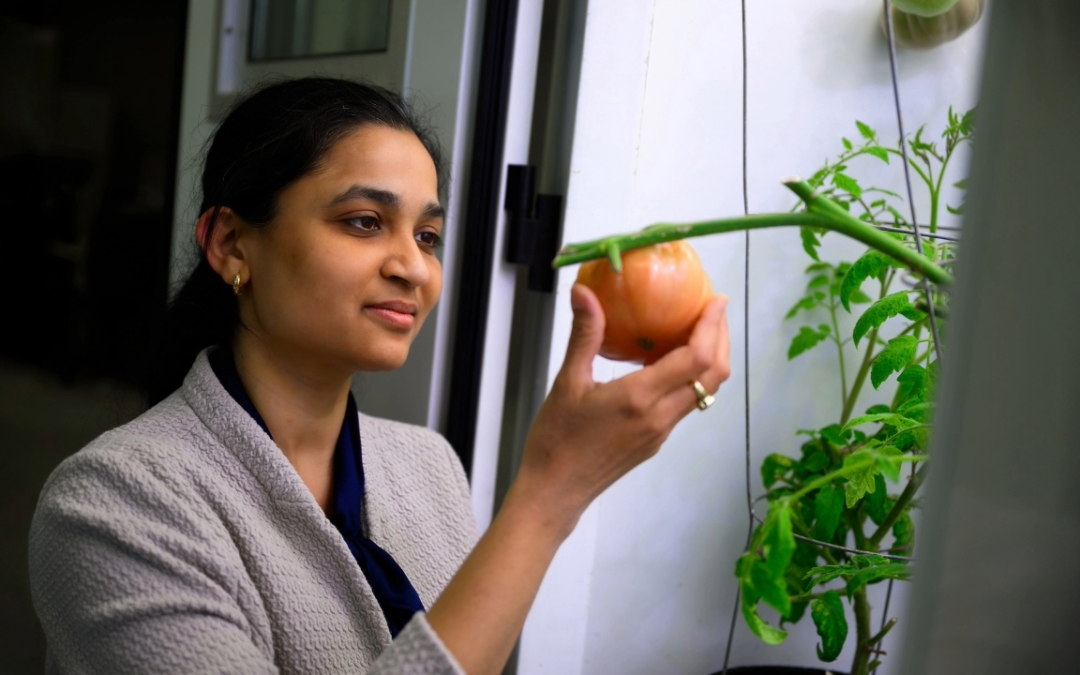
The Central Alabama Crops Tour has a long history of informing farmers in the region about the latest in production practices and technology.
By Paul Hollis
The Central Alabama Crops Tour has been an annual happening on the region’s farm scene for just shy of 40 years now, with Auburn University researchers and extension specialists and county and regional agents updating producers on the latest in production practices and technology.
The field tour has a record of drawing dozens of farmers from throughout the region, and the 2017 event, held in the sweltering late-July heat, was no exception, said retired Lee County extension coordinator Jeff Clary, who comes out of retirement every year to help with the tour.
“We’ve always been fortunate to have great crowds,” Clary said. “The specialists and researchers with Auburn University always put on a good program and provide the latest research and data for farmers, who then use this information to help them grow crops.”
The first tour was organized in 1978 at the urging of Ron Smith, extension entomologist and now professor emeritus, who was looking for a faster way to get information to growers about cotton insect control. From that beginning, the tour has evolved and now represents a microcosm of Alabama agriculture, with problems and solutions changing each year to meet the needs of farmers.
“On the first tour in 1978, we were showing off the greatest tool for insect control we had seen in many years in cotton, and that tool was pyrethroid insecticides,” Smith said. “Everyone thought it was magic because it didn’t leave any insects behind—there were no buildups of secondary pests or anything.”
During this year’s tour—which spanned several counties and ended with lunch at the E.V. Smith Research Center in Shorter—Smith discussed the status of insects in this year’s cotton crop and what growers can expect as they close out the season.
“Right now, things don’t look too bad in Alabama,” he said. “Based on the reports we’ve seen, we’re in the best shape of any state when it comes to cotton insects. That’s not to say some fields haven’t needed treatments, but it hasn’t been widespread like in some other states. If we had problems, the excessive rainfall would have prevented us from doing anything about it.”
For the remainder of the season, stink bug populations will become heavier, with the Southern green stink bug becoming more dominant.
There’s also a relatively new stink bug concern in soybeans, Smith said.
“The red-banded stink bug came in through South America a number of years ago,” Smith said. “With two back-to-back mild winters, we’re set up to have a lot of these insect pests, and they’re the most damaging stink bugs to soybeans. They love late-planted soybeans or soybeans planted behind wheat.”
Trey Cutts, assistant professor and extension agronomist, said it has been a great season for Alabama cotton producers, meaning that the data collected from variety trials should be good this year.
“We have 20 locations of our on-farm cotton variety trials across the state, all planted with 12 cotton varieties from various companies,” Cutts told growers. “We asked the companies for their top-market, most stable varieties that can be planted throughout the state. We need a data set like this to develop a stability analysis across those varieties. This will enable us to see which varieties perform best across a number of environments.”
The trial producers saw on the tour—on the Ingram Farm in Lee and Macon counties—is unique, in that it is one of four in the state that is a three-rep, large-plot trial, Cutts said.
“The objective of a trial like this is to get replicated, large-plot data that goes into a national database, like seedmatrix.com, and there you can find variety trials from across the Cotton Belt,” he said. “We’re glad Alabama is represented in that system with on-farm variety trials.”
Cutts and his team are working on a couple of different technology platforms to make this data more easily available to growers.
“We’re taking a page out of other states’ books and creating a variety calculator so you can go online and choose your growing parameters and look at cotton varieties side-by-side pretty easily,” he said. “This tool is in the later stages of development, so we should have it available by the end of the growing season. We also are revamping the Alabama Crops app, and we hope to pair those two tools so you can use the comparison tool in the app.”
The Ingram Farm also is host to a six-variety peanut trial that is replicated throughout the state. Kris Balkcom, research associate at the Wiregrass Research and Extension in Headland, was on the tour to update peanut farmers.
“We don’t have the new Auburn variety AU-NPL 17 here yet because we don’t have enough seed, but we do have it in all the research stations throughout the state, and Georgia researchers also have it,” Balkcom said. “Four stations had it last year, and it was the top variety in our research trials. We’re excited about it because it looks so good, but we’ll get a lot more looks at it this year.”
Other crops tour presentations focused on peanut diseases, insect pests, new moisture sensor technologies and weed control.




